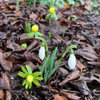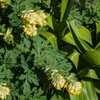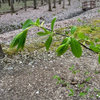Stachys inflata
wantonamara Z8 CenTex
10 years ago
Does anyone grow Stachys inflata. I bought it years ago from High Country garden and put it in Normal amended but dry garden soil. I am putting it in something more draining and in the sun. Has anyone had experience with this? Should I be going the other way and giving it more care and humus?� and water shade.



TexasRanger10
wantonamara Z8 CenTexOriginal Author
Related Professionals
Glendora Landscape Architects & Landscape Designers · Havre de Grace Landscape Architects & Landscape Designers · Saint Charles Landscape Architects & Landscape Designers · Waterbury Landscape Contractors · Braintree Landscape Contractors · Bristol Landscape Contractors · Concord Landscape Contractors · Cordele Landscape Contractors · Englewood Landscape Contractors · Mason Landscape Contractors · Mercedes Landscape Contractors · Northbridge Landscape Contractors · Shirley Landscape Contractors · Westchester Landscape Contractors · Vadnais Heights Landscape ContractorsTexasRanger10
wantonamara Z8 CenTexOriginal Author
User
TexasRanger10
wantonamara Z8 CenTexOriginal Author
TexasRanger10
wantonamara Z8 CenTexOriginal Author
User
TexasRanger10
User
TexasRanger10
User
wantonamara Z8 CenTexOriginal Author